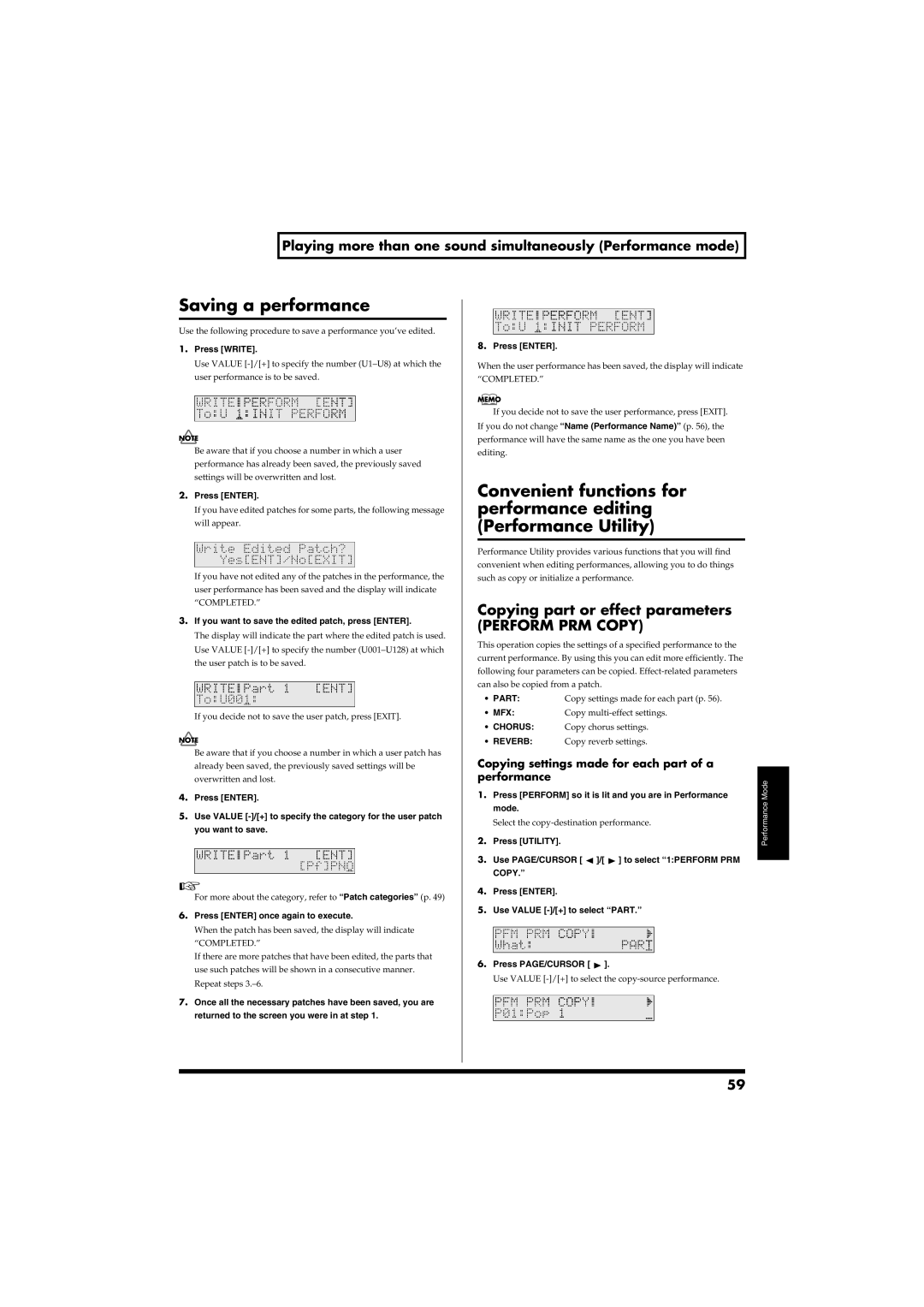
Playing more than one sound simultaneously (Performance mode)
Saving a performance
Use the following procedure to save a performance you’ve edited.
1.Press [WRITE].
Use VALUE
user performance is to be saved.
fig.r06-55_40
Be aware that if you choose a number in which a user performance has already been saved, the previously saved settings will be overwritten and lost.
2.Press [ENTER].
If you have edited patches for some parts, the following message
will appear.
fig.r06-55a_40
If you have not edited any of the patches in the performance, the user performance has been saved and the display will indicate “COMPLETED.”
3.If you want to save the edited patch, press [ENTER].
The display will indicate the part where the edited patch is used. Use VALUE
the user patch is to be saved.
fig.r06-55b_40
If you decide not to save the user patch, press [EXIT].
Be aware that if you choose a number in which a user patch has already been saved, the previously saved settings will be overwritten and lost.
4.Press [ENTER].
5.Use VALUE
you want to save.
fig.r06-55c_40
For more about the category, refer to “Patch categories” (p. 49)
6.Press [ENTER] once again to execute.
When the patch has been saved, the display will indicate “COMPLETED.”
If there are more patches that have been edited, the parts that use such patches will be shown in a consecutive manner. Repeat steps
7.Once all the necessary patches have been saved, you are returned to the screen you were in at step 1.
fig.r06-55_40
8.Press [ENTER].
When the user performance has been saved, the display will indicate “COMPLETED.”
If you decide not to save the user performance, press [EXIT]. If you do not change “Name (Performance Name)” (p. 56), the performance will have the same name as the one you have been editing.
Convenient functions for performance editing (Performance Utility)
Performance Utility provides various functions that you will find convenient when editing performances, allowing you to do things such as copy or initialize a performance.
Copying part or effect parameters
(PERFORM PRM COPY)
This operation copies the settings of a specified performance to the current performance. By using this you can edit more efficiently. The following four parameters can be copied.
•PART:Copy settings made for each part (p. 56).
•MFX:Copy
•CHORUS: Copy chorus settings.
•REVERB: Copy reverb settings.
Copying settings made for each part of a |
| |
performance | Mode | |
1. | Press [PERFORM] so it is lit and you are in Performance | |
2. | Press [UTILITY]. | Performance |
| mode. |
|
| Select the |
|
3. | Use PAGE/CURSOR [ ]/[ ] to select “1:PERFORM PRM |
|
| ||
| COPY.” |
|
4.Press [ENTER].
5.Use VALUE
fig.r06-64_40
6. Press PAGE/CURSOR [ ![]() ].
].
Use VALUE
fig.r06-65_40
59
